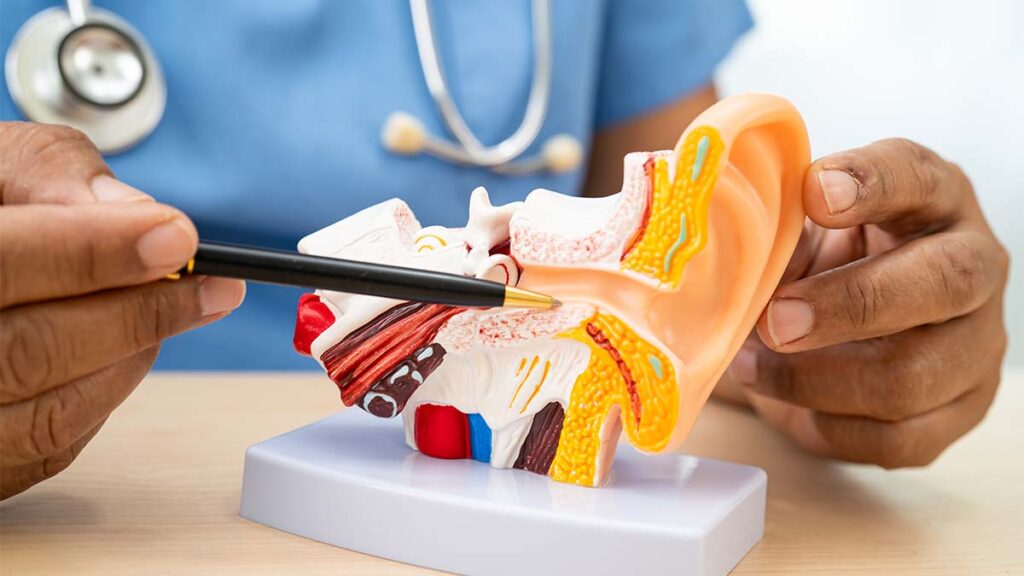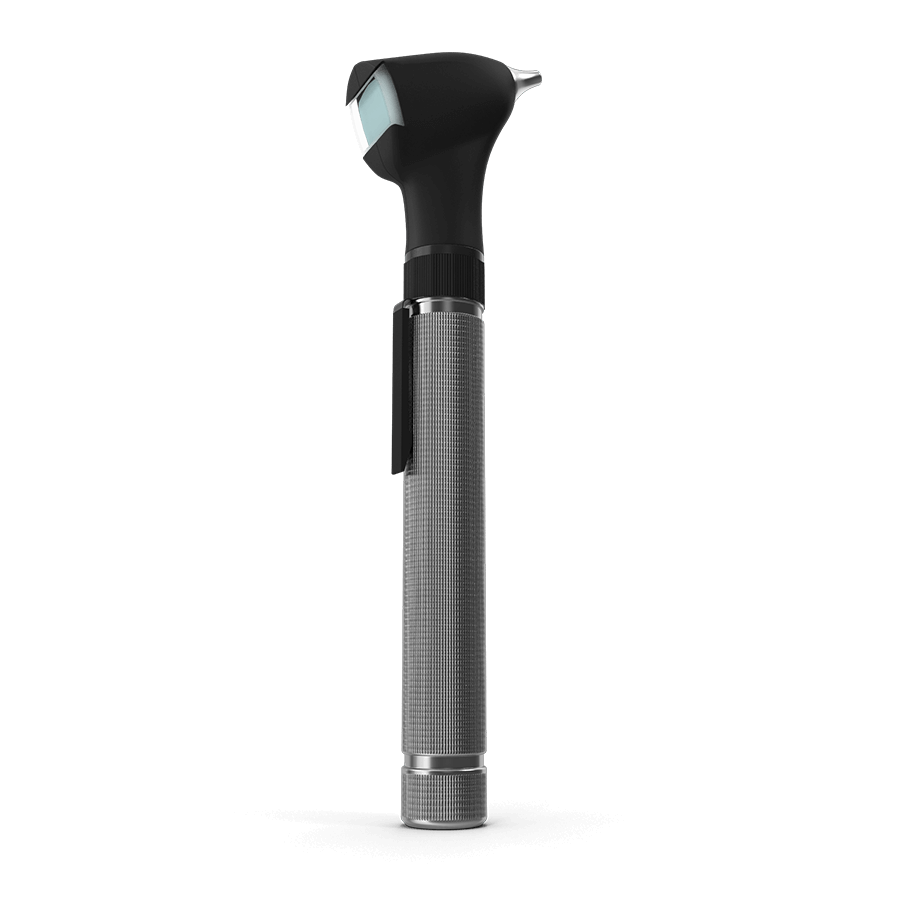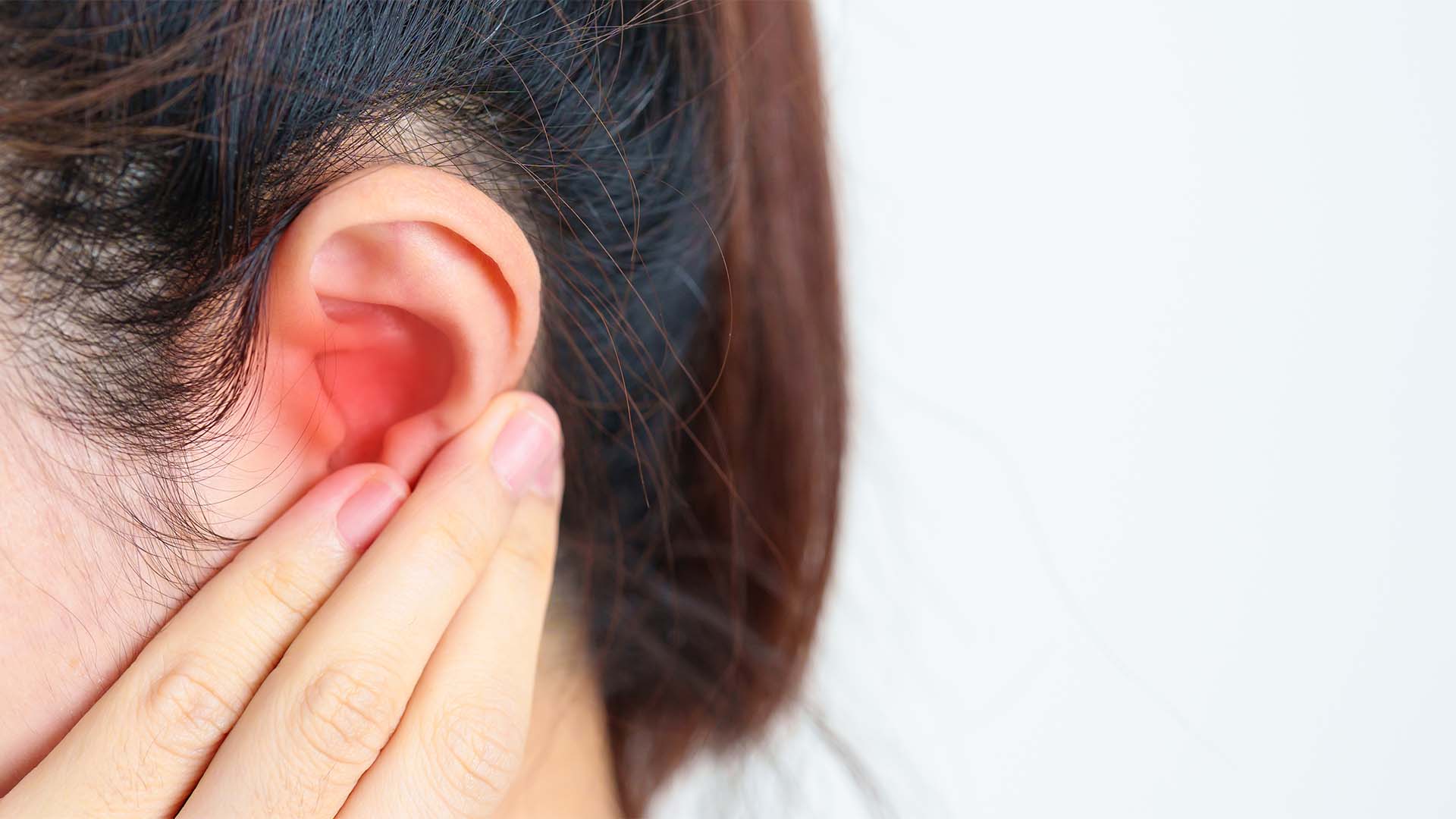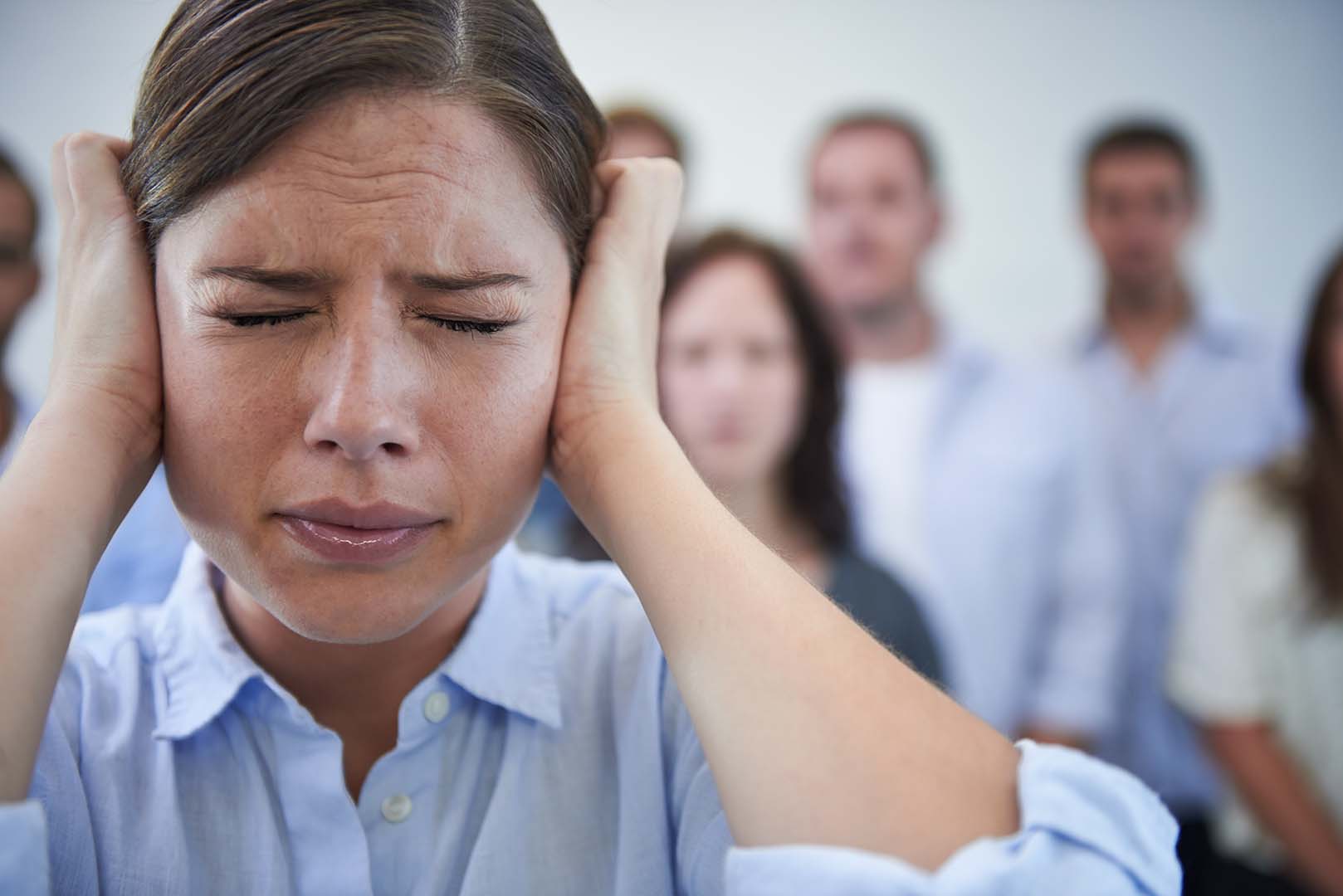Table of Contents
Earache is a symptom, not a diagnosis. The same discomfort can come from very different places in the ear, and that matters because treatment and self-care are not the same. Most painful ear problems sit in one of two spaces: the ear canal (outer ear) or the air-filled cavity behind the eardrum (middle ear). When the canal skin becomes inflamed or infected, we call it otitis externa — often nicknamed “swimmer’s ear”. When infection builds up behind an intact eardrum, it’s acute otitis media, usually after a cold. This article offers a plain-English way to tell them apart, with practical guidance on what you can safely do at home and when it’s time to be seen.
Where the problem sits — and why it feels different
Otitis externa affects the skin of the canal. That skin is thin and richly supplied with nerves, which is why the pain can be sharp and why touching the ear tends to make it worse. People often notice tenderness if they press the small cartilage nub at the front (the tragus) or if they gently pull the outer ear. Swelling and debris can narrow the canal, so hearing may come and go, and a thin discharge is common as the inflamed skin weeps.
A middle ear infection sits behind the eardrum. It often follows a few days of blocked nose, sore throat or cough. As the Eustachian tube (the pressure-equalising passage to the back of the nose) becomes inflamed and sluggish, fluid collects, pressure rises and pain builds. This pain tends to be deeper and more constant, sometimes throbby and worse at night. Fever is more likely than with otitis externa. Hearing usually feels muffled, “underwater” or dull. If pressure bursts through a weak point in the eardrum, there may be a sudden pop, brief relief of pain and a discharge — a small perforation that often heals on its own with the right care.
What commonly sets each one off
Otitis externa thrives on a damp, irritated canal. Water from swimming or frequent showers softens the skin and changes its natural defences; add cotton buds, fingernails, hairpins or ill-fitting in-ear devices and the skin can break down enough for bacteria or fungi to take hold. Eczema or contact allergies (to hair or skin products) can add to the problem, and heavy earwax sometimes traps moisture and debris against the skin.
Acute otitis media is usually the downstream effect of a viral upper respiratory infection. Children are most prone because their Eustachian tubes are shorter and narrower, but adults get it too — particularly in the cold and flu season, with allergic rhinitis, after air travel when congested, or when exposed to tobacco smoke. The common thread is poor middle-ear ventilation: if the tube cannot clear and balance pressure, fluid sits and may become infected.
How to recognise the pattern at home
If moving or touching the outer ear is a major pain trigger, otitis externa is more likely. Itch in the canal and a feeling of blockage early on fit the picture, and a thin discharge that soils a cotton bud (best avoided) or the pillow is common. Earache that ramps up after a swim or shower also points this way.
If your earache followed a cold, feels like a deep pressure with fever or general unwellness, and isn’t made much worse by touching the outer ear, think of the middle ear. Children may tug at the ear, struggle to sleep, or seem unusually irritable. Adults sometimes notice that sounds are duller and their own voice echoes.
Safe first steps — and what to avoid
For suspected otitis externa, keeping the canal dry matters. When you shower, you can place a small cotton ball smeared with a little petroleum jelly at the entrance (not deep) to keep water out, then remove it afterwards. Pain relief with paracetamol or ibuprofen is appropriate if you can take them. Avoid cotton buds, ear candles and any attempt to “scrape out” debris — these make the skin angrier and push material deeper. Hold off on earbuds or hearing aids on the sore side until things settle, and clean moulds or domes thoroughly before restarting.
For suspected middle ear infection, focus on comfort while your body does the early work. Fluids, rest and pain/fever control help most. Saline nasal sprays or other short-term measures advised by a pharmacist can ease nasal blockage and help the Eustachian tube function more freely. In many otherwise-well children and adults, symptoms start to improve over 24–48 hours without antibiotics. That said, worsening pain, high fever or marked distress are reasons to seek advice sooner.
When to book an appointment
Professional assessment is sensible if pain is moderate to severe, if it persists beyond 48 hours despite simple measures, or if you’re simply unsure which problem you have. For otitis externa, spreading redness, swelling or pronounced tenderness around the outer ear, or a smelly discharge, should be checked. For middle ear infection, persistent high fever, severe pain, or symptoms that fail to ease after a couple of days deserve review. People at higher risk — for example, with diabetes, lowered immunity, troublesome skin conditions, or hearing aids with canal discomfort — should err on the side of earlier assessment.
Urgent red flags
Seek urgent care if there is severe pain with swelling and redness of the outer ear or the skin around it, if you have tenderness over the bony area behind the ear (the mastoid), if there is facial weakness, a stiff neck or confusion, or if ear pain follows a head injury and you feel acutely unwell. These scenarios are uncommon but important.

What clinicians do — and why it helps
A calm ear examination usually separates canal problems from middle-ear problems. For otitis externa, clinicians look for swollen, inflamed canal skin and debris; careful cleaning (“aural toilet”) may be used to improve comfort and to help drops reach the skin. First-line treatment is topical eardrops with an antibacterial component (and often a mild steroid to calm inflammation), or an antifungal preparation when that’s the issue. If the canal is very swollen, a tiny wick can be placed to carry drops in while swelling eases. Most cases improve within two to three days and resolve over a week or so, provided the ear is kept dry and irritants are avoided.
For acute otitis media, examination looks for a red, bulging eardrum with reduced movement, or for a small perforation with discharge. The mainstays of care are analgesia and time; antibiotics are offered in specific situations (for example, if you are systemically unwell, if there is a perforation with pus, if you are at higher risk of complications, or in some children after careful assessment). If a perforation has occurred, you will be advised to keep water out while it heals. It’s also common to have some middle-ear fluid (with dulled hearing) for a while after the acute pain has settled; this usually clears within weeks, but follow-up is helpful if it lingers.
Prevention that actually works
For otitis externa, less is often more. Let earwax do its protective job; it’s a natural moisturiser and antimicrobial barrier. Dry the outside of the ear after swimming or showering and let the canal air-dry rather than poking anything inside. If you have eczema or contact dermatitis, keep triggers away from the canal. Ensure hearing-aid moulds or earbuds fit comfortably and are kept clean; if parts rub the skin, ask about adjustments.
For middle ear infection, the basics matter: hand hygiene and respiratory etiquette lower the spread of colds, stopping smoking benefits the Eustachian tube as well as the lungs, and well-managed nasal allergies make pressure problems less likely. If you need to fly when congested, a pharmacist or GP can advise on simple steps to make equalising pressure safer and more comfortable.
A word on home medicines
Old ear drops or partially used antibiotics may not be right for the current problem — and some drops are unsafe if you have a perforation. If you don’t know whether your eardrum is intact, don’t start drops without advice. The right treatment depends on where the problem is and what is causing it.
Bottom line
Tenderness on pulling the ear, itch and discharge point towards otitis externa; deep pressure pain after a cold, with fever and muffled hearing, suits a middle ear infection. Both are common, and both usually improve quickly with the right approach. If you’re concerned, or if symptoms are severe or persistent, a straightforward ear examination provides clarity and a plan you can trust.
Scientific References
• https://patient.info/ears-nose-throat-mouth/earache-ear-pain









